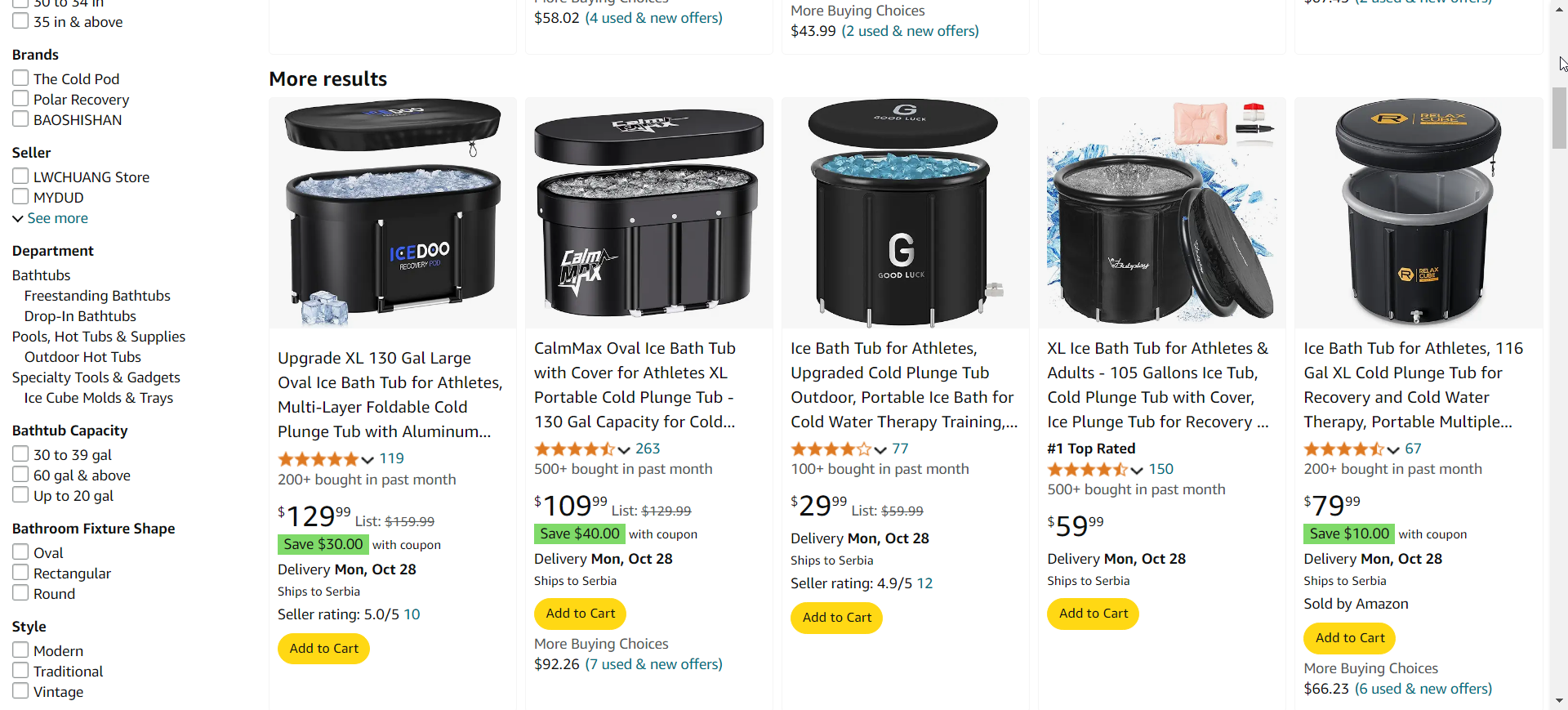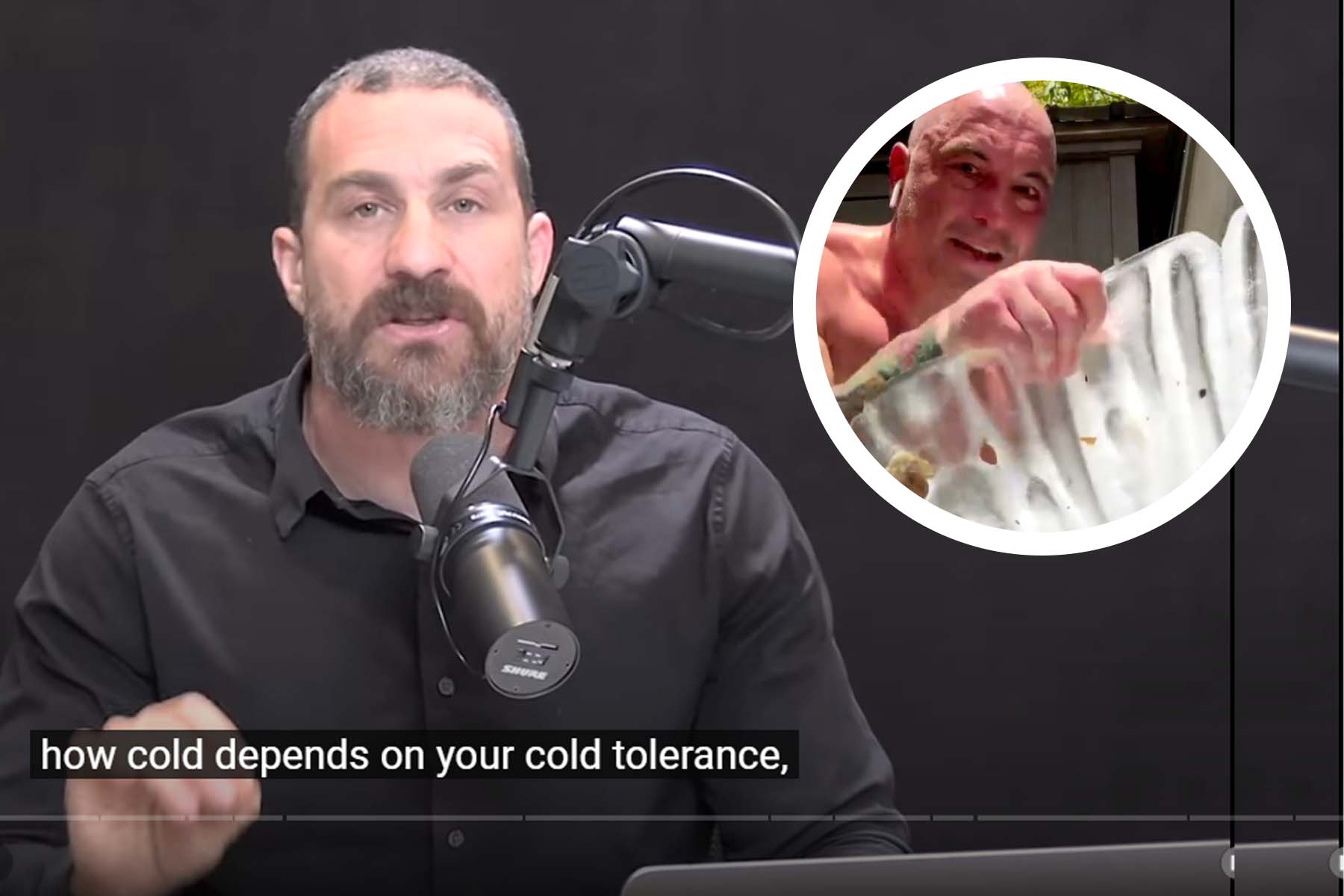In a striking shift from his previously conservative approach to cold exposure, Stanford neuroscientist Andrew Huberman has joined Joe Rogan in promoting Morozko Forge’s premium ice baths – products that now command price tags up to $29,900, nearly triple the cost of their 2023 models.
According to rudebred.com and an internet archive version of the Morozko site, default version was costing $12,860 and the premium version was going for close to $20,000 in 2023.
View this post on Instagram
Huberman shared a snippet from previous JRE appearance that Morozko shared:
“Last time, you picked on me about how warm I’m keeping my ice bath.”
“Can’t even be called an ice bath. How cold is it?”
“Uh, it’s hard. I suppose it’s probably in the low fifties.”
“What, low fifties? We have the Morozko one, which is really cold. ”
The evolution of Huberman’s stance on cold exposure is particularly noteworthy. His initial protocols emphasized gradual adaptation, starting with cold showers and moderate temperatures. Now, he’s advocating for extreme cold exposure, recently commenting on social media about using his Morozko at 44°F (6 degrees Celsius) while alternating with 225°F sauna sessions – a dramatic departure from his earlier, more measured approach.

Here’s what Huberman said about temperature on his Cold Exposure specific episode that premiered 2 years ago.
“The most common question I get about deliberate cold exposure is: how cold should the water be? We’ve answered that with “uncomfortably cold to the point where you want to get out, but you can safely stay in.”
“The second most common question I get is whether cold showers are as good, better, or worse than cold water immersion up to the neck, for instance. I also get a lot of questions about whether cryo chambers are better than the others, etc. I’m going to make all of that very simple by saying: cold water immersion up to the neck, with your feet and hands submerged, is the most effective. Second best would be a cold shower. Third best would be going outside with minimal clothing, but of course, clothing that is culturally appropriate and that allows you to experience cold to the point where you almost want to shiver or start shivering.”
“Now, there are a number of important constraints that will dictate whether you use one form of cold exposure or another. For instance, some people don’t have access to cold water immersion. They don’t have access to ice baths, cold water tanks, cold oceans, or cold lakes, etc. In that case, showers would be the next best solution. I want to emphasize that there have been very few, if any, studies of cold showers. You can imagine why. In a laboratory, you want to control as many variables as possible. So placing people into cold water immersion or an ice bath up to the neck and insisting they keep their hands and feet submerged is easy to control. It means everyone is doing essentially the same thing, whereas with cold showers, people have different body sizes, some will put their head under, and some will lean forward. Measuring the amount of cold water exposure on the body is very hard to do, so there aren’t many studies on cold showers.”
“But, of course, a lot of people don’t have access to cold water immersion, so they have to use cold showers. And if you don’t have access to either, then going outside on a cold day can still be beneficial. But I will point out that the heat transfer from your body into water is much higher—four times greater, if not more, depending on the temperature of the water—than in air. So it’s going to be much more efficient to do cold water immersion than anything else. Cold showers come after that, and exposing yourself to a cold environment would be next.”
As you can see, a far cry from recommending extreme temperatures.

This premium positioning seems increasingly disconnected from market reality, where comparable DIY setups are available on Amazon for as little as $100. Popular models like the CalmMax Oval Ice Bath Tub retail for just $109.99, making Morozko’s pricing strategy particularly striking.

The partnership bears striking similarities to other influencer marketing success stories in the wellness space. Much like Joe Rogan’s profitable involvement with Onnit (later acquired by Unilever in a deal estimated between $250-400 million), or Peter Attia’s lucrative advisory role with Oura Ring, these relationships often blur the line between scientific advocacy and commercial interest.
According to court documents, Attia was brought on as a scientific advisor to Oura in 2017, with his role explicitly including promoting the product through his social media channels and helping to facilitate its use in medical studies. For his services, which required only 10 hours of advisory work annually, Attia was granted 20,000 stock options. The lawsuit reveals that a single mention of Oura in Attia’s newsletter resulted in approximately $300,000 worth of ring sales. It also details how Attia leveraged his connections to secure positive media coverage and introductions to other influential figures in the health and wellness space.
Huberman has long been aware of the value of his influencing. One of his first major sponsorships also had a big conflict of interest. Huberman promoted his longtime girlfriend’s ‘ethically’ sourced beef company Belcampo Meat Company.
“Bel Campos Animals graze on open pastures and seasonal grasses, and that results in meat that is, hiring nutrients and healthy fats. There are now a lot of data pointing to the fact that high levels of omega three fatty acids are vital for mood, for cardiovascular health, and various aspects of maintaining what’s called a healthy inflammatory. The various things in our brain and body that maintain a healthy inflammation response, but one that doesn’t go out of whack or get unchecked in any way that is detrimental to us.” – Huberman can be heard sayin during one of his two minute ad reads.
Huberman’s association with Belcampo Meat Company, a now-defunct business started by his girlfriend, further raised concerns about transparency. The company was involved in unethical practices, including misleading marketing about its sustainable practices, and shut down amid controversy. Huberman’s endorsement of the brand without addressing these issues has led to questions about his accountability and the trustworthiness of his content. He would go on to censor mentions of either the girlfriend or the company in his comment section on social media.
This same girlfriend would go on to play a major role in that infamous attempt to cancel him for his philandering.
Industry observers note this follows a familiar pattern in the wellness industry, where scientific authority figures transition from neutral educators to product advocates. The dramatic price increases following Huberman’s involvement have led to speculation about potential equity arrangements, similar to those seen with other premium wellness products.
For consumers, the stark contrast between Morozko’s premium pricing and readily available alternatives raises questions about the true cost of cold exposure therapy. While the benefits of cold exposure are well-documented, including increased metabolism and improved mental resilience, the premium pricing strategy seems to target status rather than accessibility.


